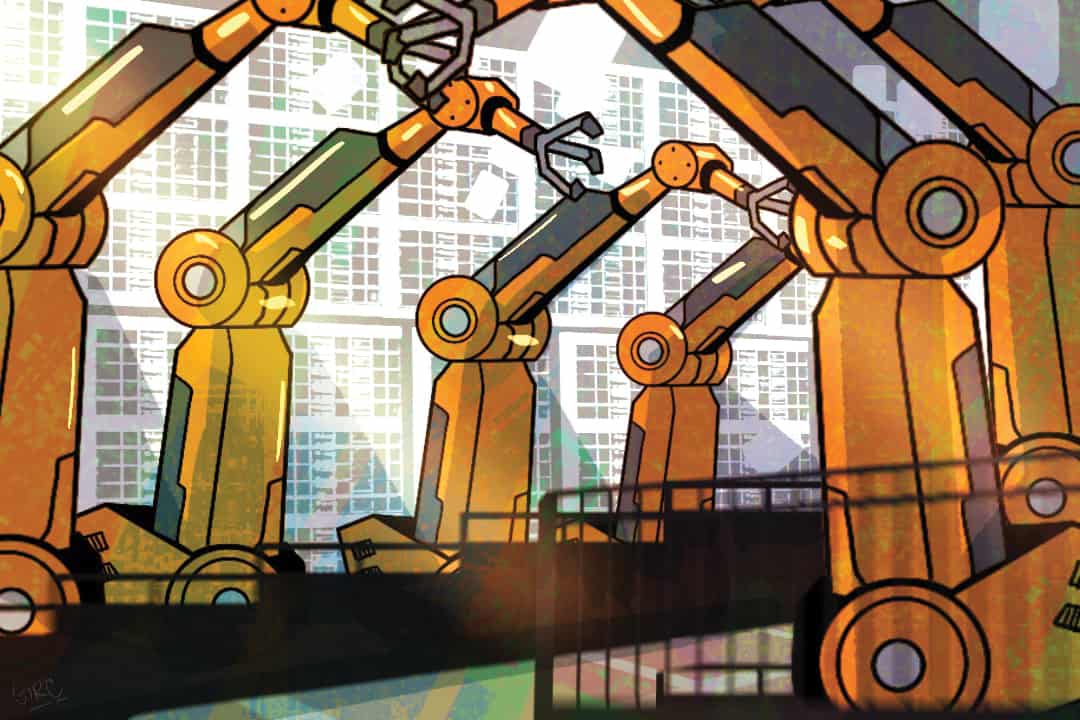The past year saw the largest increase to date in the use of robotics across various sectors. From manufacturing to coffee shops, robotics has taken over an incredible number of jobs and tasks. North American companies ordered more than 40,000 robots over the past year, with sales totalling more than $2.38 billion, ranging from small, single-tasked robots with few mechanical parts to larger, more general purpose robots.
But this massive increase hasn’t been just due to advancements in robotics. In the past year, the use — and the power — of artificial intelligence (AI) has exploded in almost every sector, from education and health care to sports and banking. With programs like ChatGPT dominating headlines across the globe and others quietly improving the lives of millions, we have hit a point where AI has become incredibly valuable to modern society.
Combined with the incredible dynamic power and adaptability of AI, robots have been able to perform an array of tasks that they would not be able to before, and businesses across North America are paying attention.
Your car was built by a robot
Over half of all robot sales in the past year were in the automotive industry, with car companies purchasing an estimated 23,807 robots. These robots work in a number of functions across automotive factories and specialize in fast, repeatable actions involving the assembly of car parts.
In the past, many of these robots would have simply performed repetitive functions, like attaching one component of the car in a long line of parts, but a great number of newer robots use machine learning techniques and AI to do a variety of tasks and improve pre-existing processes.
One such process is computer vision. Computer vision is a subfield of AI that involves enabling a computer to understand the world around it and undertake more complex tasks. Robots can then use this vision to better adjust their movements and adapt more dynamically to their environment.
With robots that could only do repetitive motions, a small issue like a misaligned wheel nut on a car could have halted an entire production line, but with advances in computer vision, a robotic arm can notice the misalignment and adjust accordingly.
Could a robot build your house or cook your food?
Outside the automotive world, one industry that purchased a sizable and surprising proportion of robots in the past year was the service sector — specifically, the restaurant industry. One company, Moley Robotics, for example, is working to develop AI-enhanced robots that can cook meals autonomously. These robots are capable of automating essentially every part of the cooking process, from chopping vegetables and processing ingredients to cooking on a pan and plating a meal.
Without the advancements in AI, the idea of such a robot would have been nearly impossible. You might not think it, but there are an incredible number of variables your brain unconsciously accounts for when you cook. Simply carrying out a repetitive motion is often not enough to cook a meal to perfection, and there are changing situations that you constantly need to adapt to.
Beyond automation and services, robotics and AI are coming together in a number of ways. Robots are being used in harvesting and agriculture, in construction to monitor progress, and even to deliver food from restaurants in place of services like Uber Eats. With all these technologies booming, it is clear that we are at the tipping point of a whole new generation of robotics and AI, with the only practical limits being our imagination.


